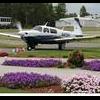Ditching at Night....are you prepared for it?
-
Members Online
- Planegary
- tomgo2
- KSMooniac
- Fly Boomer
- Slick Nick
- Lax291
- redbaron1982
- georger
- philiplane
- Ron McBride
- Shortround
- gevertex
- Glen Davis
- TCC
- Andy95W
- William A
- hammdo
- EricJ
- Echo
- Scottknoll
- DCarlton
- toto
- qbh borescope
- bigmo
- 30X
- Grumpy
- Paradigm
- exM20K
- navysix
- 201Mooniac
- Justin Schmidt
- ohdub
- RescueMunchkin
- Hank
- FLYFST
- AndreiC
- thomas1142
- Buckeyechuck
- PeteMc
- Mobius708
- Utah20Gflyer
- Fritz1
- Sixstring2k
- phrogpilot73
- patrickf
- affricate
- Kevin Westbrook
- Aaviationist
- 0TreeLemur
- Rwsavory
- NotarPilot


Recommended Posts
Join the conversation
You can post now and register later. If you have an account, sign in now to post with your account.